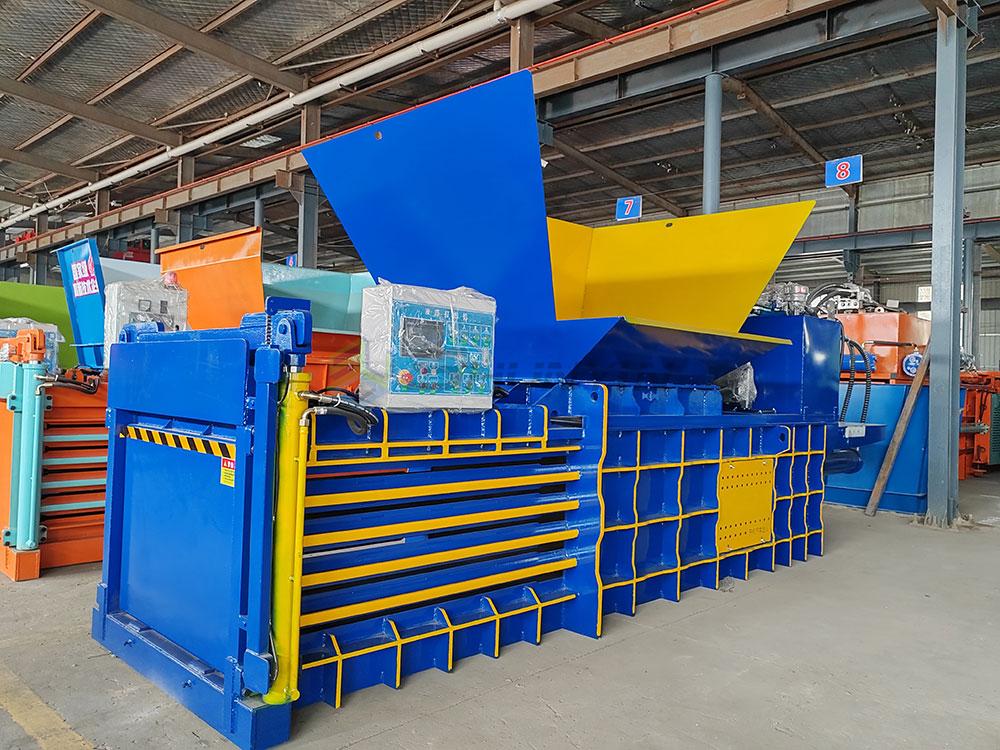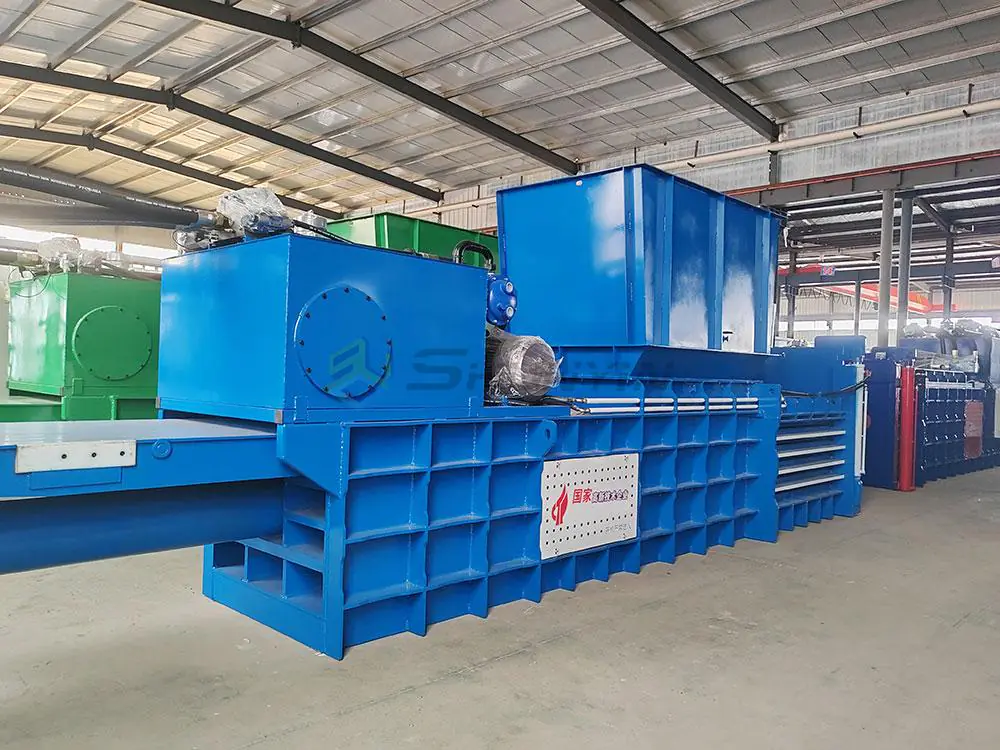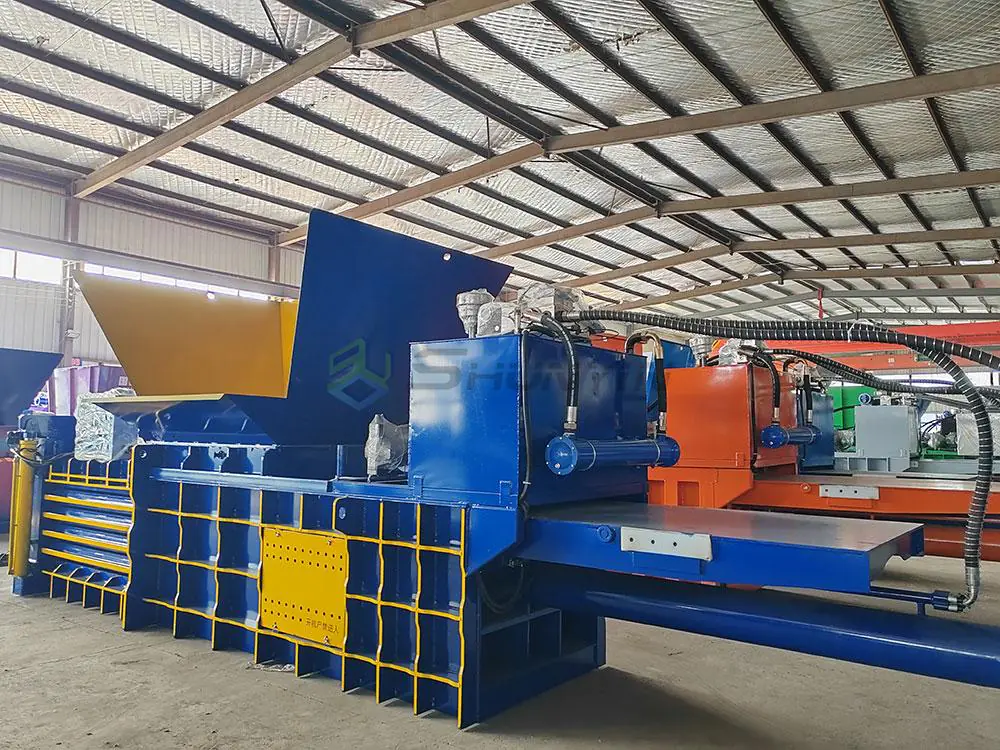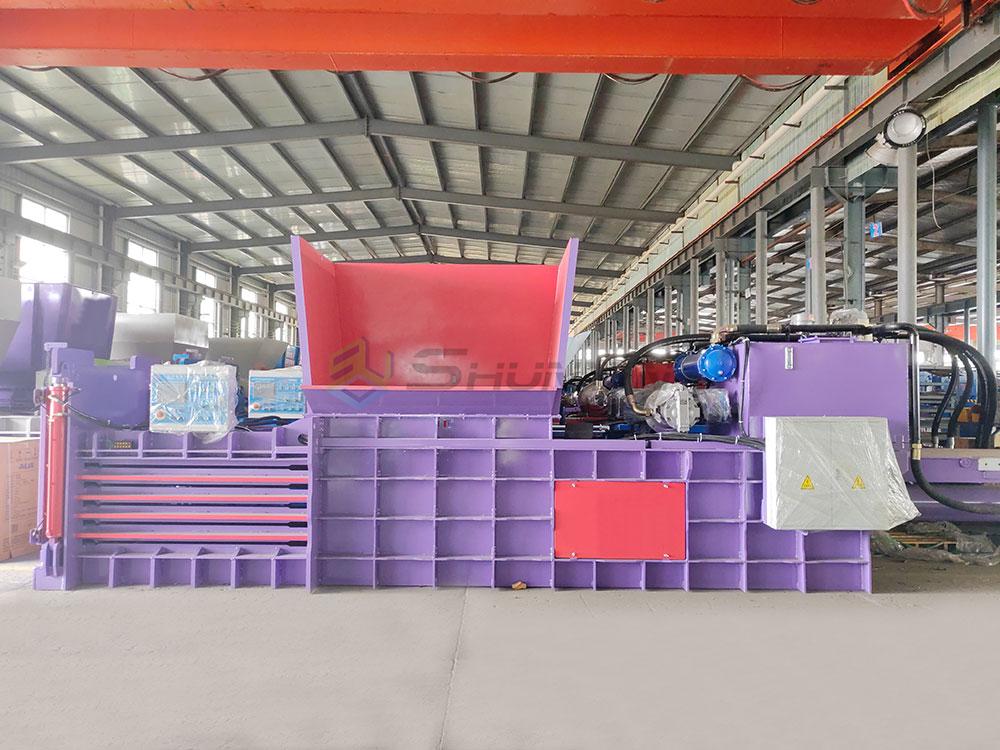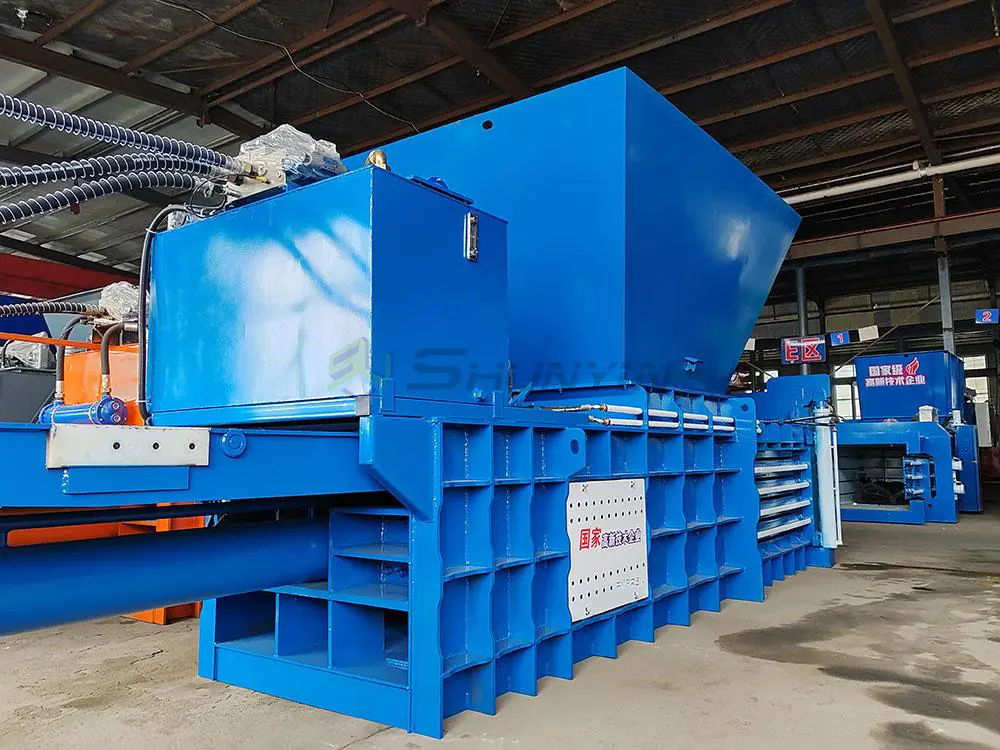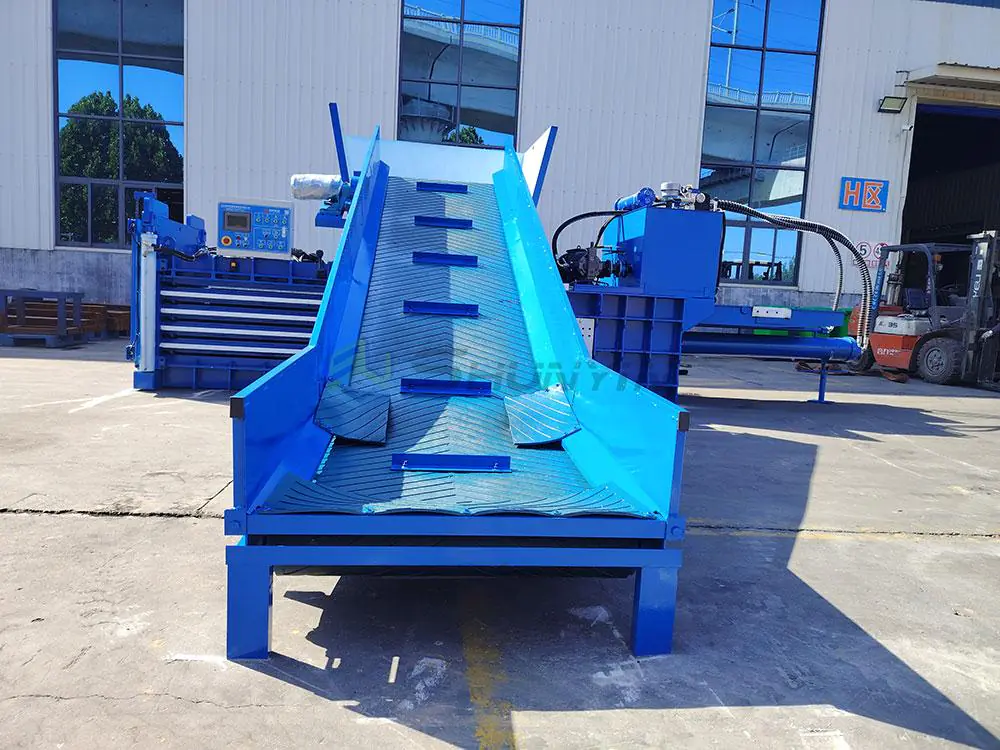
Finding the right equipment at the best price can be daunting. The market for horizontal hydraulic balers is competitive, and making the right choice is crucial for efficient operations. Understanding pricing factors is essential to make an informed decision.
The price of a horizontal hydraulic baler in China varies based on factors like capacity, automation, and material compatibility. Here are the typical price ranges:
- Entry-Level Models: $15,000 – $30,000 (For small to medium operations with basic features).
- Mid-Range Models: $30,000 – $50,000 (For moderate to high-volume operations with better efficiency and automation).
- High-End Models: $50,000 – $100,000+ (For large-scale operations with advanced features and high throughput).
Key factors influencing price:
- Capacity & Bale Size: Larger sizes and higher compression cost more.
- Automation: Fully automated systems are more expensive.
- Customization: Tailored solutions increase price.
Shipping, installation, and after-sales service costs should also be considered when determining the total price.
Choosing the right baler involves balancing cost with quality and functionality. Let’s explore the key aspects that influence baler pricing and help you find the best value for your investment.
What is the average price of a baler?
Assessing the average price of a baler is the first step in budgeting for your recycling operations. Understanding market standards helps in negotiating better deals and avoiding overpayment.
The average price of a baler varies widely based on type, capacity, and automation. In China, prices generally range from $5,000 for basic models to over $60,000 for high-end, fully automatic balers. Horizontal hydraulic balers typically fall between $10,000 and $50,000, offering a balance of efficiency and affordability.

Factors Influencing Baler Prices
In my experience, several factors determine the cost of balers. These include the machine’s capacity, build quality, automation level, and additional features.
Capacity and Size
Higher capacity balers that can handle larger volumes of waste will naturally cost more. The size of the baler also affects transportation and installation costs.
Automation and Features
Automatic balers with advanced features like programmable settings, remote monitoring, and enhanced safety mechanisms are priced higher due to their sophisticated technology.
Build Quality and Durability
Machines made from high-quality materials with robust construction last longer and require less maintenance, justifying a higher initial investment.
| Factor | Impact on Price |
|---|---|
| Capacity and Size | Larger and higher-capacity machines are more expensive |
| Automation | More automated features increase cost |
| Build Quality | Higher quality materials raise the price |
| Brand Reputation | Well-known brands often charge premium prices |
Understanding these factors helps in selecting a baler that offers the best value for your specific needs, ensuring long-term efficiency and cost-effectiveness.
What is the difference between vertical and horizontal balers?
Choosing between vertical and horizontal balers depends on your specific waste management needs. Each type has distinct advantages and is suited to different operational requirements.
Vertical balers are typically more compact and suited for smaller operations with limited space, while horizontal balers offer higher capacity and are ideal for larger facilities that handle significant volumes of waste.

Comparing Vertical and Horizontal Balers
In my operations, deciding between vertical and horizontal balers was crucial. Each type has its unique strengths and is better suited for different scenarios.
Vertical Balers
Vertical balers are designed to save space, making them ideal for facilities with limited floor area. They operate by compressing waste vertically, allowing for more compact installations.
- Space-Efficient: Requires less floor space compared to horizontal balers.
- Lower Capacity: Suitable for smaller volumes of waste.
- Cost-Effective: Generally cheaper than horizontal balers, making them ideal for smaller businesses.
Horizontal Balers
Horizontal balers are built for higher efficiency and capacity, making them suitable for large-scale operations. They compress waste horizontally, allowing for greater bale density and faster processing times.
- High Capacity: Can handle larger volumes of waste, ideal for big facilities.
- Higher Efficiency: Faster compression cycles improve overall productivity.
- Durable Construction: Built to withstand heavy-duty use in industrial settings.
| Feature | Vertical Baler | Horizontal Baler |
|---|---|---|
| Space Requirement | Low | High |
| Capacity | Lower | Higher |
| Cost | More affordable | More expensive |
| Ideal For | Small to medium operations | Large-scale recycling facilities |
| Compression Cycle Time | Slower | Faster |
Choosing the right type depends on your facility’s size, the volume of waste you handle, and your budget. Horizontal balers, while more expensive, offer greater efficiency and capacity, making them a better investment for larger operations.
What is the price of an automatic baler?
Automation in balers significantly impacts pricing. Automatic balers offer enhanced features that streamline operations, but they come at a higher cost compared to manual or semi-automatic models.
The price of an automatic baler in China typically ranges from $30,000 to $100,000. These balers offer advanced features such as programmable compression settings, remote monitoring, and faster cycle times, providing higher efficiency and productivity for large-scale operations.

Benefits of Automatic Balers
Investing in an automatic baler can lead to significant operational improvements. In my experience, the automation features not only increase efficiency but also reduce labor costs.
Enhanced Efficiency
Automatic balers can compress waste faster and more consistently than manual balers. This increased efficiency allows for higher throughput and better use of operational time.
Reduced Labor Costs
With automation, the need for manual intervention is minimized. This reduces labor costs and minimizes the risk of human error, leading to more reliable operations.
Advanced Features
Automatic balers often come with features like touch-screen controls, programmable settings, and remote monitoring capabilities. These features make it easier to manage and maintain the baler, ensuring optimal performance.
| Feature | Impact on Operations |
|---|---|
| Programmable Settings | Customize compression cycles for different materials |
| Remote Monitoring | Track performance and maintenance needs remotely |
| Faster Cycle Times | Increase overall productivity and throughput |
| Touch-Screen Controls | Simplify operation and reduce training time |
The higher initial investment in an automatic baler is offset by the long-term benefits of increased efficiency and reduced labor costs. For large facilities, the return on investment is typically realized within a few years of operation.
What is a hydraulic baler?
Hydraulic balers are a popular choice in the recycling industry due to their reliability and efficiency. Understanding what makes hydraulic balers stand out is key to making an informed purchasing decision.
A hydraulic baler uses hydraulic pressure to compress waste materials into dense bales. This technology ensures consistent bale density and is capable of handling a variety of materials, making it a versatile and efficient option for recycling operations.

How Hydraulic Balers Work
Hydraulic balers operate by using hydraulic systems to apply pressure to waste materials. In my facility, this process has streamlined our recycling operations, allowing us to handle large volumes of waste efficiently.
The Compression Process
- Loading: Waste materials are loaded into the baler chamber.
- Compression: Hydraulic cylinders apply pressure, compressing the materials into a dense bale.
- Tying: The bale is tied with wire or strapping to maintain its shape and density.
- Ejection: The completed bale is ejected from the baler, ready for transport or storage.
Advantages of Hydraulic Balers
Hydraulic balers offer several advantages over other types of balers. Their ability to apply consistent pressure ensures uniform bale density, which is crucial for efficient storage and transportation.
- Consistency: Hydraulic systems provide steady and controlled pressure, resulting in uniform bales.
- Versatility: Capable of handling a wide range of materials, including cardboard, plastic, and metals.
- Durability: Built to withstand heavy-duty use in industrial environments, ensuring long-term reliability.
| Feature | Benefit |
|---|---|
| Consistent Compression | Uniform bale density for efficient storage |
| Material Versatility | Handles various types of recyclable materials |
| Durable Construction | Long-lasting performance in demanding settings |
Hydraulic balers are a solid investment for recycling facilities aiming to enhance their operational efficiency and handle diverse waste streams effectively.
Conclusion
Securing the best price for a horizontal hydraulic baler in China involves understanding the average costs, differences between baler types, and the benefits of automation. Investing wisely in a hydraulic baler can significantly enhance your recycling operations, offering both efficiency and long-term savings.


